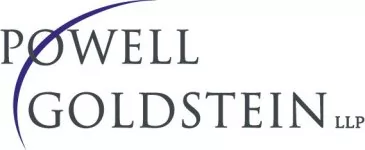Returning To The Good Old Days
Recent changes in the tax laws and accounting pronouncements have spawned a renewed interest in equity grants that are settled in stock. Until the issuance of Accounting Principles Board Opinion No. 25, most stock options provided optionees with the choice of exercising the option by making a cash payment equal to the exercise amount (the exercise price multiplied by the number of shares subject to the option) by surrendering shares with a value equal to the exercise amount. However, FAS 123(R) has renewed the viability of net exercise provisions in stock options as well as other cashless equity awards, such as stock-settled stock appreciation rights (SSARs).
Under APB Opinion No. 25, all stock options where the exercise price was not paid by the option holder in cash or in shares that had been held for at least six months were subject to variable accounting treatment. All forms of stock appreciation rights (SARs), regardless of structure, were also subject to variable accounting. This variable accounting treatment required periodic charges to compensation expense as a company's stock changed in value. The administrative hassle and expense of variable accounting caused most companies to avoid providing net exercises or SARs.
However, FAS 123(R) provides that a properly designed option with a net exercise provision or a SSAR receives the same accounting treatment as an option where the exercise price is paid in cash. More specifically, companies are only required to measure the compensation element of the award at the time of grant, rather than continuously adjusting the expense amount over time.
The use of net exercise provisions or SARs is also permissible under Internal Revenue Code §409A, which governs deferred compensation. Under the initial guidance issued by the IRS, the use of net exercise provisions was generally limited to public companies. However, the final regulations issued under §409A allow both public and private companies to utilize net exercise provisions provided that the equity awards are issued at fair market value and do not contain other deferral features. Thus, the major barriers impeding the use of net exercises no longer exist.
Net Exercise Provisions
Stock options with net exercise provisions, like most other derivatives, are essentially rights to receive value associated with the appreciation in the value of the underlying shares after the date the equity award is granted. Economically, options with a net exercise provision offer the same compensation value as a stock option where the exercise price must be paid in cash. The primary difference is that with the latter, employees must first pay the exercise price in cash to receive the stock underlying the option. To generate the funds, optionees of public companies often involve the use of a broker to sell a portion the stock in the open market to cover the cost of the exercise, with the broker effectively lending the optionee the exercise price to be repaid from the sale proceeds. By contrast, with a net exercise, an employee is not required to make a cash payment for the exercise and instead simply receives the net shares, or the number of shares with a fair market value equal to the difference between the exercise price and the current fair market value.
Advantages Over Stock Options Settled In Cash
With the accounting treatment no longer an obstacle, companies should consider implementing options with net exercise provisions because of the considerable advantages over traditional stock options for the following reasons:
- Net exercises result in less shares issued and sold into
the market;
- Net exercises do not result in the same level of dilution
to existing shareholders' interests because a fewer
number of shares are ultimately issued upon exercise;
- Employees can exercise options without the need to
produce cash to pay the exercise price;
- For public companies, the decreased number of shares in
the open market may lessen the need for a company to
implement a repurchase program, which can often be
administratively onerous and may require compliance with
additional securities laws;
- By providing net exercises, companies may be able to
extend the life of an option plan because fewer shares are
issued upon exercise; and
- Net exercises can result in executives and other key
employees holding the shares for longer periods of time
(which may have the added benefit of facilitating
"hold-til-retirement" policies for top
executives).
Conclusion
Because options with net exercise provisions have economic results similar to traditional stock options but also have several additional benefits, companies should consider utilizing net exercise provisions. As employers search for new and original techniques to attract, retain, and compensate employees, and with the positive changes provided by FAS 123(R), the implementation of net exercises have now again become an attractive and practical alternative. Companies should consider the various tax, securities law, accounting and plan design issues that need to be addresses prior to implementing net exercise provisions.
The content of this article is intended to provide a general guide to the subject matter. Specialist advice should be sought about your specific circumstances.


